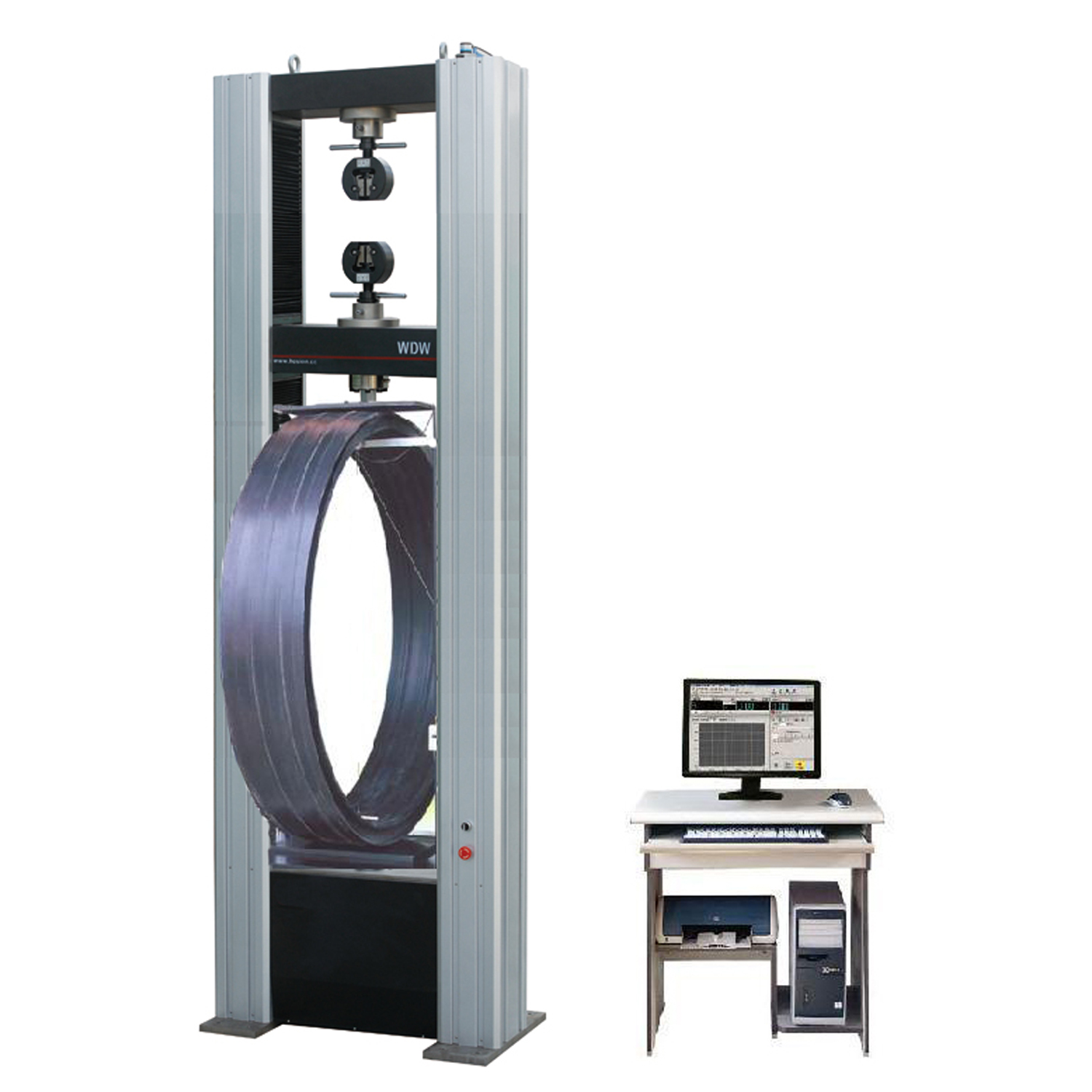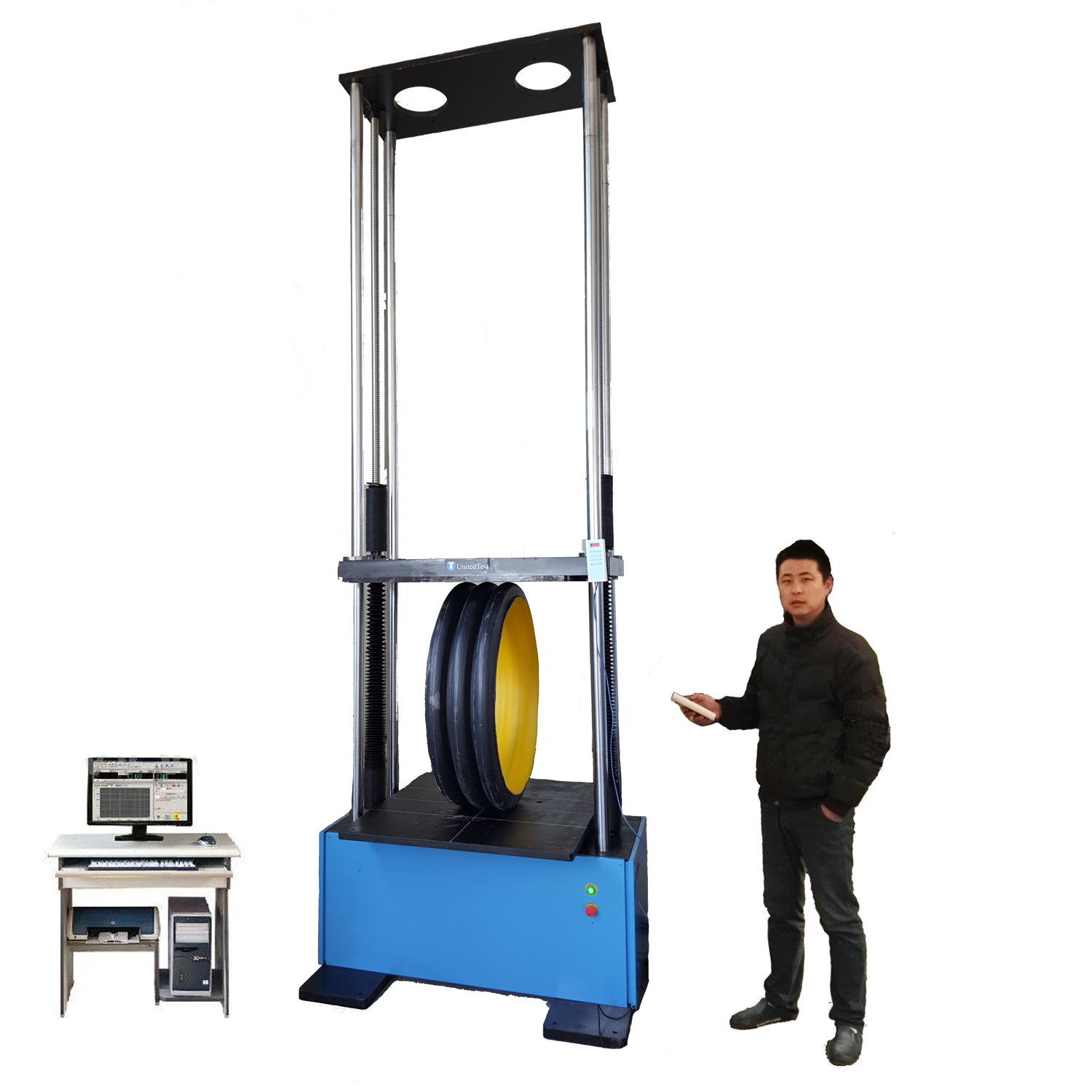The ring stiffness reflects the ability of the pipe to resist deformation when subjected to vertical compression, directly affecting its stability and durability. The experiment simulates the external pressure environment to test the load bearing capacity of the pipe under specific deformation (such as 3% deformation in the diameter direction), in order to determine its ring stiffness value.
I1. Test procedure
Sample preparation
Specimen specifications
Length: 300 mm ± 10 mm, cut flat at both ends and free of defects.
Pretreatment: 23°C±2°C environment conditioning for at least 24 hours to eliminate temperature effects.
Special structural pipe requirements
The corrugated pipe needs to verify the bonding strength between the corrugated layer and the inner wall, and the steel strip reinforced pipe needs to detect the peeling of the steel strip.


I2. Test equipment and calibration
Core equipment
Ring stiffness tester: It is required to be able to apply a constant rate compressive load (accuracy ±1%), equipped with a high-precision force sensor (accuracy 1 N) and a displacement sensor (accuracy 0.01 mm).
Environmental control: The temperature fluctuation in the laboratory ≤± 0.5°C, and the daily temperature difference is ≤1°C.
Calibration requirements
The equipment must comply with the calibration specifications of GB/T 16491 or ISO 9969, and the force value and deformation measurement system must be regularly verified.
I3. Test process
Sample installation
Place the specimen horizontally, and the contact surface of the platen at both ends should be parallel to avoid axial displacement.
Loading phase
Preloading: Apply an initial load of 50N to eliminate the gap.
Formal loading: Compressed at a rate of (5±1) mm/min, the force value (F) when the deformation reaches 3% (ΔY=0.03D, D is the initial inner diameter) is recorded.
Repeatability verification
The test was repeated after rotation of the same specimen by 90°, and the average of the results was taken twice.
I4. Data processing and calculation
Ring stiffness (S) calculation
Formula: S=FΔY×LS=ΔY×LF (unit: kN/m²), where L is the length of the specimen.
Result Judgment If the pipe ruptures before 3% deformation, it is judged to be unqualified, and the material or process problem needs to be investigated.
I5. Related standard:
ISO 9969 Thermoplastics pipes -- Determination of ring stiffness
ISO 9967 Thermoplastics pipes -- Determination of creep ratio
ASTM D2412 Standard Test Method for Determination of External Loading Characteristics of Plastic Pipe by Parallel-Plate Loading
EN 1446 Plastics piping and ducting systems - Thermoplastics pipes - Determination of ring flexibility
DIN 16961 Thermoplastics pipes and fittings with profiled wall and smooth pipe inside
AS/NZS 1462.22 Methods of test for plastics pipes and fittings Method 22: Thermoplastics pipes – Determination of ring stiffness
Beijing United Test Co.,Ltd. export@unitedtest.com offer the testing equipment of pipe ring stiffness test. Contact us now : export@unitedtest.com, unitedtest@hotmail.com












